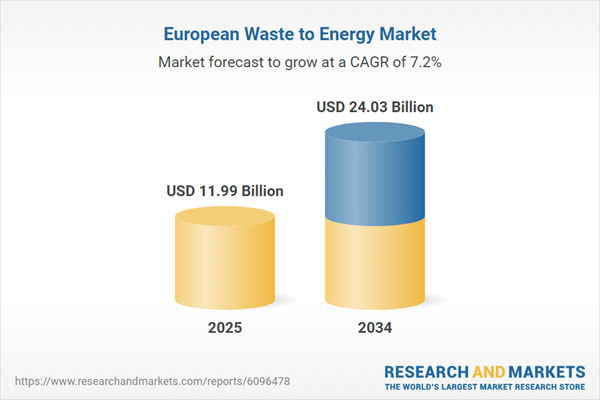As per the Europe waste to energy market analysis, numerous European countries are implementing measures to transform waste into energy. For instance, in the city of Belgrade, the disposal of everyday waste from households used to occur in a landfill that gained infamy due to landslides, pollution, fires, and unpleasant smells. However, the introduction of a new waste management facility, which includes a waste-to-energy plant capable of converting a maximum of 340,000 tons of waste into renewable heat and electricity, has rejuvenated the region. As a result, residents can now enjoy clean air, and the environment has been able to restore itself to its original condition.
The biological conversion of waste to energy has emerged as one of the most promising technologies. Dendro liquid energy (DLE), is one such cutting-edge waste-to-energy system that offers high energy conversion rate (more than 80%), and as it processes waste biologically, it leads to almost zero emissions. DLE systems are considered more efficient for energy generation when compared to other WtE techniques like anaerobic digestion.
The governments in countries like Germany, the Netherlands, and Austria have introduced stringent landfill bans, and are promoting waste-to-energy and recycling as complementary to reduce waste from landfills. Such measures are leading to the Europe waste to energy market growth.
Germany is expected to continue to be the leading market due to increasing investments made in advancing waste to energy technologies and strict enforcement of prevailing environmental protection laws. The nation currently has over 65 waste incineration plants in operation with a total capacity of handling 20 million metric tonnes of waste. It has one of the highest rates of waste to energy conversion in the world. Other European nations that have a high rate of conversion from waste to energy include Sweden, Finland, Denmark, Belgium, Switzerland, and Norway, among others.
Market Segmentation
Europe Waste to Energy Market Report and Forecast 2025-2034 offers a detailed analysis of the market based on the following segmentsMarket Breakup by Technology
- Thermal
- Incineration
- Pyrolysis
- Gasification
- Biological
- Physical
Market Breakup by Region
- Germany
- United Kingdom
- France
- Italy
- Others
Competitive Landscape
The waste to energy sector has garnered significant attention from market players due to its growing importance in addressing the global waste management and energy challenges.- Hitachi Zosen Inova AG
- Martin GmbH
- A2A S.p.A.
- Mitsubishi Heavy Industries Ltd
- Babcock & Wilcox Enterprise Inc
- Covanta Holding Corporation
- Veolia Environment SA
- Ramboll Group A/S
- Iqony GmbH (Steag GmbH)
- Encyclis Limited
- Others
Table of Contents
Companies Mentioned
- Hitachi Zosen Inova AG
- Martin GmbH
- A2A S.p.A.
- Mitsubishi Heavy Industries Ltd
- Babcock & Wilcox Enterprise Inc
- Covanta Holding Corporation
- Veolia Environment SA
- Ramboll Group A/S
- Iqony GmbH (Steag GmbH)
- Encyclis Limited
Table Information
| Report Attribute | Details |
|---|---|
| No. of Pages | 110 |
| Published | May 2025 |
| Forecast Period | 2025 - 2034 |
| Estimated Market Value ( USD | $ 11.99 Billion |
| Forecasted Market Value ( USD | $ 24.03 Billion |
| Compound Annual Growth Rate | 7.2% |
| Regions Covered | Europe |
| No. of Companies Mentioned | 10 |









